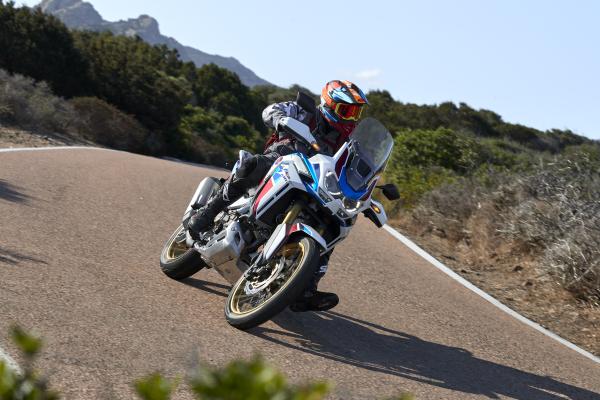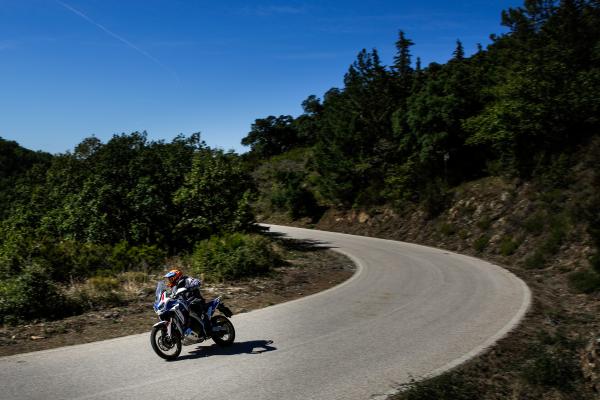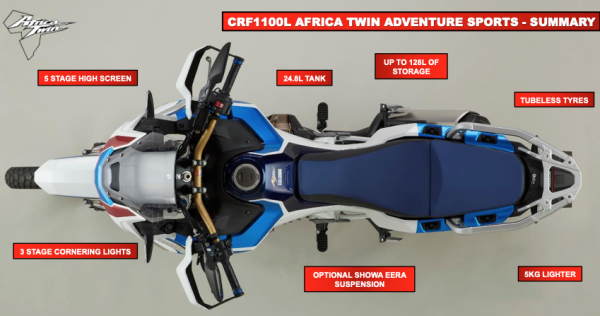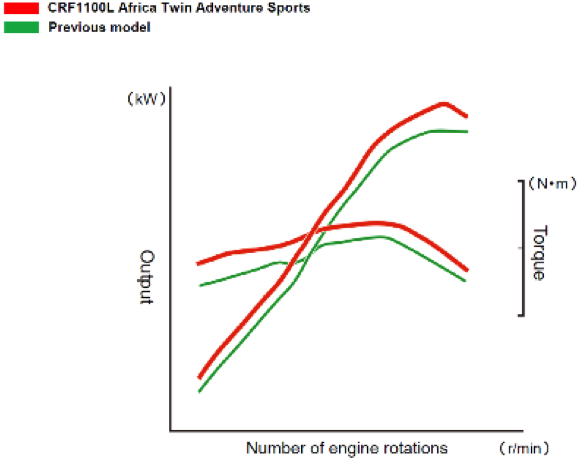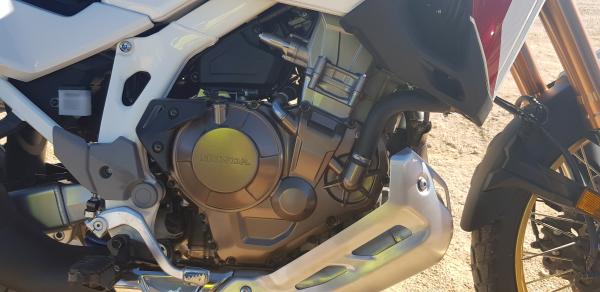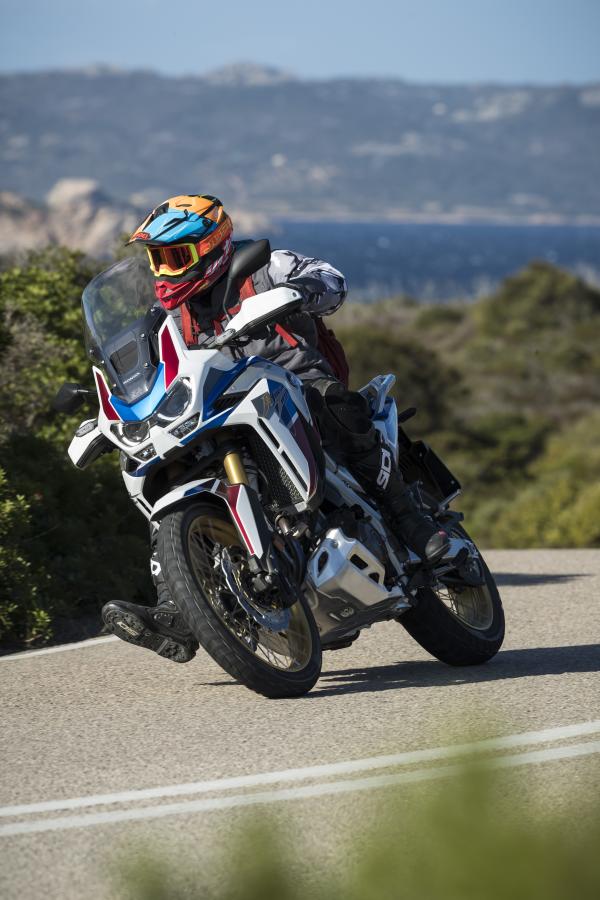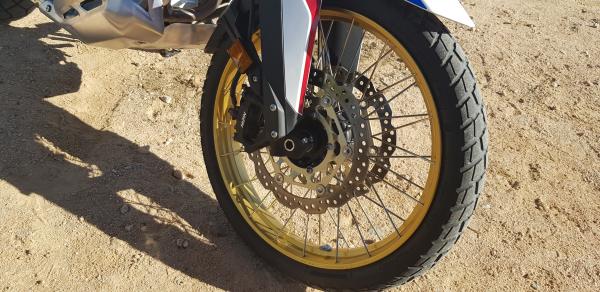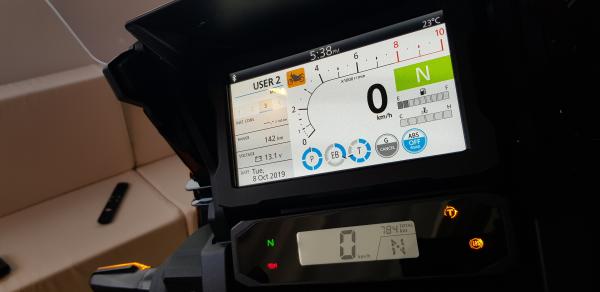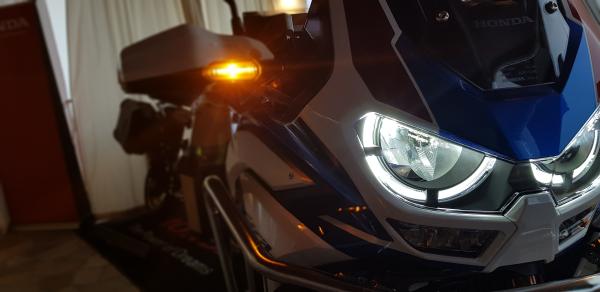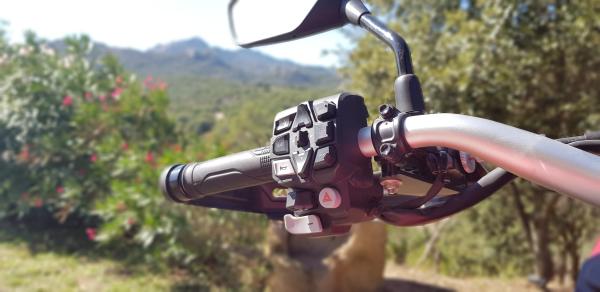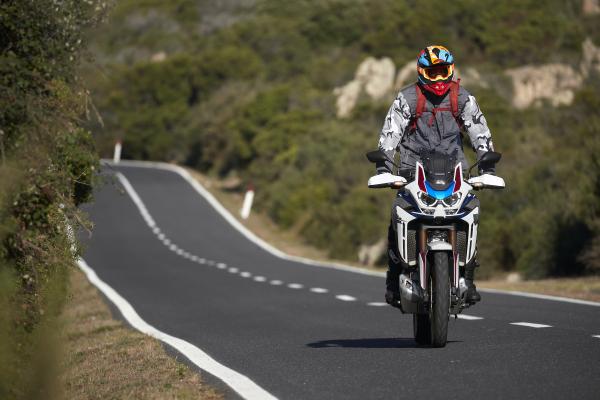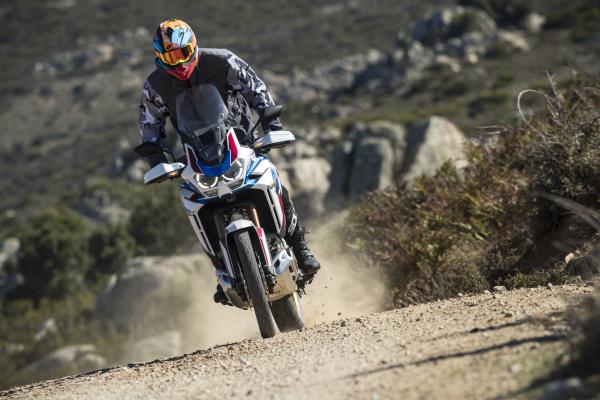Honda CRF1100L Africa Twin Adventure Sports | First Ride Review
Visordown tests the new Honda CRF1100L Africa Twin Adventure Sports motorcycle, both on and off-road; Here’s what we make of it.

Member for
54 years 8 monthsHonda invited us to the stunning island of Sardinia to test their brand new CRF1100L Africa Twin Adventure Sports DCT, both with and without electronic suspension. We gladly attended to see exactly how the 2020 Africa Twin is an improvement on the last CRF1000L model.
Being an adventure bike, most of the day was spent razzing through the kind of roads that you dream of as a motorcyclist, with mountains and deep blue Mediterranean sea for views. The other half was spent on dusty and bumpy gravel ‘roads’ [or tracks], which really demonstrated just how capable a machine the new Africa Twin is off-road.
Despite the similarity in looks to the old model, the 2020 Africa Twin hasn’t just received a facelift. It’s pretty much a new bike from the tyres up. And we friggin love it!
Price
The Africa twin comes in a few different variants such as:
Honda CRF1100L Africa Twin – £13,049
Honda CRF1100L Africa Twin Adventure Sports - £14,649
Honda CRF1100L Africa Twin Adventure Sports DCT - £15,849
Honda CRF1100L Africa Twin Adventure Sports ES (electronic suspension) - £16,049
Honda CRF1100L Africa Twin Adventure Sports ES DCT - £17,349
The model variant I rode most was the gem of the range, with all the electronic gizmos you could possibly desire, including a dual-clutch transmission (DCT) and electronic suspension (ES) - which for just over seventeen grand is pretty good value.
Engine and Transmission
The new 1084cc 270° parallel twin motor has received a new cylinder head, valve timing, throttle body [with improved flow] and a new exhaust profile (with exhaust control valve). And it's also EURO 5 compliant. These changes produce 6-7% more power and torque, bringing the power up to 101HP and torque to 105Nm. Coupled with the 2.5kg weight saving the new machine has a 10% power to weight saving on the old one. And my goodness does it feel sweet.
On the road the power increase is noticeable. Granted it’s not 1290 Super Adventure power, but when you pull the throttle from idle to redline, it feels silky smooth. There’s a reassuring whoosh of torque at four and six thousand rpm, and flicking the DCT shifters makes the surge endless. The power doesn’t bite your face off and make you shiver your timbers. Quite the opposite. Instead, the grunt and the way it’s produced invites you to have a bit of a brrraaaapp.
The addition of an exhaust control valve helps not only to smooth out the torque curve from low to high rpm, but also produces a lovely engine note. The standard exhaust pops and farts on downshifts (with DCT), and the optional quickshifter does the same on the up and downshifts (manual).
Overall, the friendly yet bold character of the larger motor lends itself well to swift road riding and technical off-road excursions. Plus, as one of our guides said “you can boss it”, meaning [off-road] you can spin up the rear and not worry about being spat off into a bush. Well, that’s how I interpreted it...
The DCT transmission worked well in manual mode, both on and off-road. Personally, I felt that the auto mode still lacks the fun factor - shifting up way too early and unintuitively. However, the shifters on the LH bar are epic fun to use, and on sweeping off-road sections, the system allows you to focus on simply riding the motorcycle.
On the more technical off-road downhill sections, I struggled to get my head around not having a clutch, both for slippage and engine braking. Also, the system is a tad jerky as you crack the throttle at low revs. It’s not a deal-breaker, but something to bear in mind if you're into uber technical off-road riding.
Economy
We covered 270km with 25l tank and only used about just over half the fuel. Bear in mind, some parts weren't exactly at cruising speed. Here are some more scientific figures:
Fuel Consumption - 4.9L/100km (20.4km/L) MT - 4.8L/100km (20.8km/L) DCT
Chassis and Suspension
The semi-double-cradle frame has been modified to save 2.2kg and the swing arm is inspired by the CRF450 MX bike. The reason for these changes was simply for agility and stability. And after riding the Africa Twin Adventure Sport for a day and a half, I can attest to these claims.
The bike has that Honda planted and composed feeling, without being reluctant to change direction. Of course, it’s a 250+kg bike - so it needs a little guidance - but once on line, it tracks exactly where you want it to, offering plenty of feedback from both the standard and electronic suspension variants.
The Showa electronic suspension system has mitigated the nosedive which was prevalent on the previous model. And depending on what riding mode you're in the suspension will adapt - even firming up for pillion and luggage.
At first, I had reservations about the ES system lowering feel and connectedness to the road surface, but the actuality was quite the opposite. It works away in the background and makes the front end feel as planted as a superbike. Which boggles my mind.
Off-road, the suspension does extremely well. It soaks up all kinds of lumps and bumps without that soul-destroying feeling of a bottom out. And it even has a jump mode if you feel brave enough… Good to know you can land softly every time right?
The pitfalls of the system are additional weight and cost. The adjustment motor is a fairly hefty unit, and the suspension components themselves would require specialist servicing. C spanners and Halford's sockets won’t cut the mustard.
Handling
With the electronic suspension providing a magic carpet ride and the chassis providing feel and stability, the bike handles beautifully. The dual-sport Bridgestone tyres provide plenty of on-road grip despite the 21” skinny front tyre. The ‘Big Tank’ Africa Twin flicks like it’s lightweight CB500X little brother. And it’s addictive.
Off-road handling is just as comforting as on tarmac, although the dual-sport Bridgestone rubber feels more oriented to road use [losing a bit of responsiveness on the rough stuff]. However, the Metzeler option tyres feel better off-road with a slight detriment to road grippiness. Swings and roundabouts.
The poise and balance of the Adventure Sport is something of a miracle for its weight. The only thing limiting its performance off-road is the rider. In short, the handling is easy, playful and direct. Oh, and epic fun!
Brakes
At the front, is a pair of 310mm dual wave floating hydraulic discs with two Nissin radial-mounted 4-piston calipers. The rear has a large 256mm wavey hydraulic disc with a Tokico single piston caliper. Both front and rear brakes have a two-channel ABS and cornering ABS system, which translates to being able to take the absolute piss on the brakes.
Onroad, you can trail brake deep into a corner, and off-road you can hammer on the levers to prevent overshooting a technical hairpin, like a complete rookie. Somehow the bike stays upright, which feels like some sort of voodoo. It's a very refined and confidence inspiring system.
Standard Equipment on CRF1100L Adventure Sport
6.7” touch TFT dash and LCD lower panel
6 Axis IMU
ABS and cornering ABS
7 levels of Honda Selective Torque Control
Wheelie control
Daytime running lights
Cornering lights
LED headlights and taillight
Height adjustable screen
Cruise control
Heated grips
ACC charger
Apple CarPlay + Bluetooth
And many many buttons…
CRF1100L Adventure Sport riding modes and aides
• IMU-managed HSTC intervention levels optimised for off-road use (7 levels)
• Wheelie Control features 3 levels and IMU management
• OFF-ROAD joins the default riding modes TOUR, URBAN and GRAVEL
• Two USER modes allow for complete riding modes customisation
• G Switch (DCT only)
The buttons to operate the modes seem to have been inspired by the Goldwing. There are too many buttons, and it all gets a bit convoluted. With time in the saddle, operation of this system would most likely improve - although it’s not intuitive.
The self-cancelling indicators aren’t the greatest either, but you can turn off this function.
Comfort and ergonomics
For a mile muncher, the Adventure Sport isn’t too shabby comfort-wise. The handlebars are quite swept backwards leading to a neutral 90° upright seating position. The screen reduces buffeting at legal speeds, but for taller riders could do with a bit more adjustment - as the top of the screen was at the same levels as my eye line (I'm 6ft4).
The 870mm high adjustable seat (which can be lowered by 20mm) strikes a good balance between soft and firm and doesn’t hurt your cheeks the next day. Even after 270km in the saddle - with a few breaks in between - the only real fatigue I felt was mental, not physical.
We love:
· Build quality and attention to detail
· On and off-road handling capability
· Electronics package
· Empowering riding position
We don’t love:
· Indicator stalk design
· Dash takes too long to load
· Startup safety warning on touch screen each time bike is switched on
Honda CRF1100L Africa Twin Adventure Sport DTC ES Verdict
In short, the new 2020 Africa Twin Adventure Sport is a humdinger. It does everything you ask of it and more - without kicking up a fuss. The power to weight increase is a vast improvement on the last model, and the parallel power plant punchy yet silky smooth.
Not to get all wishy-washy, but this is an adventure machine that you can connect with. It’s involving yet not taxing physically. Balanced, yet not boring. Test ride one and you’ll see where I’m coming from.
The once outgunned Africa Twin is no more. The CRF1100L is finally ready to rock and roll with the big boys.
Now, to convince Honda to give me one as a long-termer. Chances are it’s going to be a long queue…
Honda CRF1100L Africa Twin Adventure Sports specs
ENGINE | |
Type | SOHC liquid-cooled 4-stroke 8-valve parallel twin with 270° crank and Uni-cam |
Displacement | 1084cc |
Bore & Stroke | 92mm x 81.5mm |
Compression Ratio | 10.1:1 |
Max. Power Output | 75kW at 7500rpm |
Max. Torque | 105Nm at 6250rpm |
Noise Level | 73dB |
Oil Capacity | 4.8/4.3 (5.2/4.7 DCT) |
FUEL SYSTEM | |
Carburation | PGM-FI |
Fuel Tank Capacity | 24.8L |
CO2 Emissions | 112g/km MT 110g/km DCT |
Fuel Consumption | 4.9L/100km (20.4km/L) MT 4.8L/100km (20.8km/L) DCT |
ELECTRICAL SYSTEM | |
Starter | Electric |
Battery Capacity | 12V-6Ah Li-ion battery (20hr) |
ACG Output | 0.49kW/5000rpm |
DRIVETRAIN | |
Clutch Type | Wet, multiplate with coil springs, aluminium cam assist and slipper clutch DCT – 2 wet multiplate clutches with coil springs |
Transmission Type | 6 speed manual (6 speed DCT) |
FRAME | |
Type | Semi double cradle |
CHASSIS | |
Dimensions (L´W´H) | 2330mm x 960mm x 1560mm (1620mm with screen in uppermost position) |
Wheelbase | 1575mm |
Caster Angle | 27.5° |
Trail | 113mm |
Seat Height | 850/870mm (low seat option 825mm, high seat option 895mm) |
Ground Clearance | 250mm |
Kerb Weight | 238kg (DCT 248kg) With Showa EERATM 240kg MT (DCT 250kg) |
SUSPENSION | |
Type Front | Showa 45mm cartridge-type inverted telescopic fork with dial-style preload adjuster and damping adjustment, 230mm stroke EERATM - Showa Telescopic inverted fork with an inner tube diameter of 45mm, and Showa EERATM with compression and rebound dumping adjustments, 230mm stroke |
Type Rear | Monoblock aluminium swing arm with Pro-Link with Showa gas-charged damper, hydraulic dial-style preload adjuster and rebound damping adjustments, 220 mm rear wheel travel. EERATM - Monoblock aluminium swing arm with Pro-Link with Showa gas-charged damper, hydraulic remote control preload adjuster and electric control unit with compression and rebound damping adjustments, 220 mm rear wheel travel |
WHEELS | |
Type Front | 21M/C x MT2.15 wire spoke with aluminium rim |
Type Rear | 18M/C x MT4.00 wire spoke with aluminium rim |
Rim Size Front | 21" |
Rim Size Rear | 18" |
Tyres Front | 90/90-21M/C 54H (tubeless type) Bridgestone Battlax Adventurecross Tourer AX41T Metzler Karoo Street |
Tyres Rear | 150/70R18M/C 70H (tubeless type) Bridgestone Battlax Adventurecross Tourer AX41T Metzler Karoo Street |
BRAKES | |
ABS System Type | 2 channel with IMU Selectable ABS MODE with on-road and off-road setting |
Type Front | 310mm dual wave floating hydraulic disc with aluminium hub and radial fit 4-piston calipers and sintered metal pads |
Type Rear | 256mm wave hydraulic disc with single piston caliper and sintered metal pads. 2-Channel with rear ABS off mode. |
INSTRUMENTS & ELECTRICS | |
Instruments | LCD Meter, TFT 6.5inch touch panel multi information display |
Security System | Immobiliser, security alarm (optional) |
Headlight | LED |
Taillight | LED |
Electrics | Daytime running lights, Bluetooth audio and Apple Carplay, USB socket, auto turn signal cancel, cruise control, emergency stop signal, IMU, HSTC, wheelie control |
